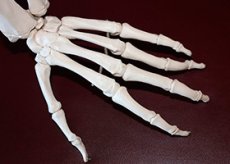New publications
What do gut bacteria and the development of osteoarthritis have in common?
Last reviewed: 02.07.2025

All iLive content is medically reviewed or fact checked to ensure as much factual accuracy as possible.
We have strict sourcing guidelines and only link to reputable media sites, academic research institutions and, whenever possible, medically peer reviewed studies. Note that the numbers in parentheses ([1], [2], etc.) are clickable links to these studies.
If you feel that any of our content is inaccurate, out-of-date, or otherwise questionable, please select it and press Ctrl + Enter.

It would seem, what is the connection between intestinal bacteria and joint diseases? However, with the help of research it was possible to prove that the imbalance of intestinal flora can provoke joint pain. In our country, approximately every third person over 45 suffers from arthrosis
to one degree or another. Among people over 65, the number of patients with joint pathologies is already 70%. In the United States, the number of people suffering from arthrosis is close to 31 million people.
Degenerative changes in joints lead to disability: arthrosis is incurable.
Doctors have always believed that arthrosis occurs as a result of prolonged and increased loads on joints - and not only during heavy work at work, but also due to excess weight.
Now American specialists have been able to explain the connection between such pathologies as intestinal dysbacteriosis, obesity and osteoarthritis.
Representatives of the Medical Center at the University of Rochester claim that taking prebiotics can affect joint health. A study was conducted under the direction of Michael Zustik, a professor of orthopedics, an employee of the Center for Musculoskeletal System.
During the research, the scientists fed the rodents high-fat food for 3 months. The mice gradually developed diseases such as obesity and diabetes, and the quality of their intestinal flora changed for the worse. As the experts had expected, the excess fat led to the rapid proliferation of pro-inflammatory microorganisms. The number of beneficial microflora decreased significantly, including lactobacilli and bifidobacteria. At the same time, the content of inflammatory markers in the mice increased, in particular, in the joint tissues.
Then the experimental rodents had their joints damaged and the progress of arthrosis was observed. In rodents with disrupted intestinal flora, cartilage destruction occurred faster – wear was observed after three months.
“Cartilage tissue acts as a shock absorber and lubricant, facilitating freedom of movement. If this function is disrupted, the bones begin to rub against each other like stones. Once this process is complete, the only way out is joint replacement. By studying osteoarthritis, we want to slow down or completely prevent the development of this pathology,” the researchers explained.
The next stage of the work was fattening the second group of rodents. In this case, along with fatty food, the mice were offered the prebiotic drug oligofructose. Based on the results of the analysis, the scientists found that the prebiotic activated the development of beneficial flora and suppressed the proliferation of pathogenic microbes. Taking the prebiotic led to a decrease in inflammatory markers, and the rodents became more resistant to the development of osteoarthritis.
In addition, stabilization of the intestinal flora played a role in the prevention of diabetes, improving carbohydrate metabolism.
Scientists suggest that intestinal problems and joint diseases are linked by common roots, and medicine is able to prevent or slow down the development of arthrosis by improving the quality of microflora.
The information is described in an article published by the JCI Insight journal.
